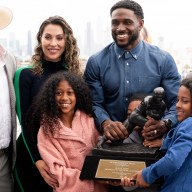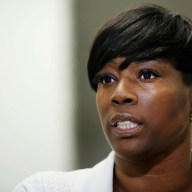 Is online dating just a big scam?
Is online dating just a big scam?
Credit: Thinkstock
There are many stories of couples that have met online. They clicked from the first time they clicked: Love, marriage and kids are in their future, and they owe it all to meeting on XYZ dating website.
But is that the norm? To find out, I asked 1.6 million people on my Facebook page. The result: An outpouring of missed dates, mixed messages and misunderstood expectations. In essence, the horror stories seem to outnumber any purported success rate by a very wide margin. Let’s pull back the romantic veil of online dating and get into their claims a bit.
Jaded Data
Last year, the Huffington Post reported that a study funded by eHarmony found that as many as 35 percent of Americans now meet their spouses online. Sounds impressive, right? The implication, of course, is that they met them on eHarmony.
But if you read the complete study (and most people don’t), you will be quick to discover that “online” doesn’t just mean dating sites. It means somewhere in the digital world of the internet, including virtual worlds, chat rooms, multiplayer games, and social networks – as well as dating sites.
In fact, a recent study from the Association for Psychological Science found that although people are using online dating sites, the way people are actually finding spouses over the last several years remains largely unchanged. According to the study, 38 percent of people met a spouse at work or at school. Meanwhile, 17 percent met a spouse on a dating site – hardly the “35 percent of Americans” as implied in the eHarmony study.
The Science Behind Online Dating
Proprietary algorithms, tests and questionnaires that promise to match you with a mate provide an air of awe and confidence with a glint of the scientific. But the questions feeding these algorithms are highly suspect. Firstly, to match someone with a potential mate, these questionnaires need to be answered honestly and accurately (and they aren’t).
But, the questions these surveys ask are really about dating – not relationships and there is a big difference between dating someone today and being compatible for the long term. These compatibility tests don’t take into account upbringing, childhood environment and/or teenage influences, nor do they address changing attitudes and needs. And, again, this is all assuming the respondents are telling the truth, the whole truth, and nothing but the truth. How often do you think that happens?
 Credit: Charles Orlando
Credit: Charles Orlando
The Human Element
Beyond all the pseudo-science, online dating short-circuits the natural courtship process of men and women. Primal dating rituals and natural courtship don’t include posting a profile and a few pictures.
Want to find out Charles’ biggest issues with online dating? Read more on metro.us/blogs. Here are the biggest issues with online dating:
Lack of honesty: It’s well documented that both men and women lie when completing their online profiles. According to a 2011 article in the New York Times, over 80 percent of online daters don’t tell the truth. In essence, you are starting a relationship based on dishonesty.
Deceptive first impressions: One of the biggest challenges with online dating is that you aren’t actually meeting the person; you are meeting their portrayal and estimation of the best parts of their personality. And it’s not even them; it’s a digital impersonation, and a poor one, at that.
The absence of non-verbal communication: According to communication expert Albert Mehrabian there are three elements that account for someone taking a liking or interest in another person: words, tone of voice and body language. With online dating, you only get the words (and not even spoken words). The remaining-yet-critical 93 percent of the evaluation process is not available. Facial expression, gestures, paralinguistics, body language and posture, eye movement and appearance get lost to the digital format.
No real get-to-know-you process: In the real world, both parties communicate via verbal and non-verbal cues. But with online dating, prospective daters head to Google, Facebook, Twitter and other online sites to gather information about someone they might have an interest in. From there, opinions and assumptions are made — away from the prospective date — allowing for the decision of interest to be reached before even meeting in the real world.
Even more damage occurs when interest is affirmed. Most of the first interactions between daters take place via email and online chat messages — which means their entire investment is mental/emotional. This can lend itself to a false positive impression of “connection”, and lead the daters to believe that they really know each other … when, in fact, they don’t know each other at all.
Stay tuned for part two of this series next week.
This week’s links:
1. Does society silently encourage the mistreatment of women? Read my post here.
2. You know what I DON’T like? Pick-up artists. Here’s what I have to say.
3. Imagine if there were eight easy ways to make your relationship incredible? You’re in luck. Read more here.
What’s up and what’s down:
Up: Online dating just got smarter. Match.com is teaming up with Mensa, a high-IQ membership organization, to connect really, really smart people.
Down: “Harry Potter” star Rupert Grint was stunned to discover his profile on dozens of internet dating websites after someone stole his bank card and signed him up on a search for love. Moral: No one is safe from online catfishing.
Charles J. Orlando is relationship expert and author of the bestselling book series “The Problem with Women… is Men®.” Find out more about Charles on his website, or visit him on Facebook for real-world love advice.
















